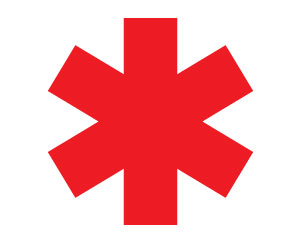Penn Herb Wellness Guide
H1N1 Flu Outbreak Calls for Simple Precautions, Not Panic

In the midst of the scary headlines about the spread of swine flu (H1N1 influenza), many people don’t realize that it is primarily newsworthy because it is a new virus, so health officials don’t yet know all about how it will affect the population, and therefore do not have a clear strategy for controlling spread and optimizing treatment. As the Centers for Disease Control and Prevention(CDC) say ontheir website, concern about this disease is a"reflection of the spread of the new H1N1 virus, not the severity of illness caused by the virus." They go on to say that most people who become ill have recovered without any treatment. So, despite the unknowns, signs point to the majority of people best defending themselves by going about their regular business and protecting their health in the same simple, practical ways they always do.
Flu season vaccinations
As of the summer of 2009, the CDC confirms that some existing antiviral drugs have been approved for use against H1N1, and that a new ("novel") vaccine developed specifically for this virus is expected to be ready in the fall, possibly after the standard seasonal flu shot is available. The standard seasonal flu shot recommendations still apply for children, pregnant women, and seniors, and people are encouraged to get this shot early in the season, but this vaccine will not protect against H1N1.
Upon approval of a novel H1N1 vaccine, the CDC advisors recommend the following groups receive it:
- Pregnant women
- People who live with or care for children younger than 6 months of age
- Healthcare and emergency services personnel,
- People between 6 months and 24 years old
- People ages 25 to 64 years old who are at higher risk for novel H1N1 because of chronic health disorders or compromised immune systems.
Availability and other considerations are not yet known. Check with your doctor or the CDC website (www.cdc.gov/h1n1flu) for updates as they become available.
Putting it in perspective
The swine flu is so called because the virus partly originated in pigs, though it also contains bird (avian) and human genes. Swine flu is technicallycalled H1N1, which is how its genetic make-up is described. It is the genes in a virus that determine how infectious it is, how easily it spreads from person to person, and the symptoms of the illness it causes.
H1N1 generally causes typical flu symptoms, such as fever, fatigue, coughing, sore throat, vomiting, and headaches. Like other influenzas, this strain may be serious if not managed properly. While swine flu is a concern for public health officials worldwide, it may help to consider the fall 2008 outbreak—when most people worldwide first heard about it—in the context of a typical flu season, which runs from November through March. Between 30,000 and 50,000 people die from influenza infection in the United States every year. At this point, relatively few people are suspected to have died—and probably a fraction of that will be confirmed to have died—from the infection, worldwide.
As we head into the next cold-and-flu season, officials have already learned more about this flu's behavior and are making recommendations accordingly.Also comforting is that we are much better prepared for a serious flu outbreak than in previous years. Existing antiviral medications are approved for H1N1 treatment (available though standard healthcare channels), we have more supportive medical care available than in years past, and we can coordinate a response to a flu outbreak more easily. And it helps to recognize that pork itself is not dangerous. It is safe to continue eating pork, so long as you follow standard, safe-food handling practices: avoid raw or undercooked pork and avoid cross-contamination between raw and cooked pork.
Prevention is the best cure
What can you do to stay healthy? “Plenty,” says Alan R. Gaby, MD, noted author and physician, and chief science editor at Aisle7. “People tend to focus on the frightening aspects of a flu outbreak that are out of our control, but there are many simple, practical things you can do, from hand-washing to keeping your disease-fighting defenses in top shape with a healthy diet and regular exercise.” Practice the following strategies to help keep you and your family flu-free.
- Wash your hands often. Use regular soap with warm water, and wash for 20 full seconds. (About the time it takes to sing the Alphabet Song.)
- Take your time. When you hand wash, scrub around your nails and the backs of your hands.
- Carry alcohol-based hand sanitizers to be used in a pinch.
- Cover your mouth and nose with a tissue when you sneeze or cough. If you don’t have a tissue, sneeze or cough into your elbow, which prevents contaminating your hands and spreading the germs to other surfaces you touch.
- Avoid touching your mouth, nose, and eyes, which can spread germs.
- Keep your diet healthy. Antioxidant-rich vegetables and fruits—such as broccoli, sweet peppers, carrots, citrus fruits, blueberries, pomegranate, and green leafy vegetables (such as spinach)—can improve your immune function and overall health.
- Get more D. Insufficient levels of vitamin D in the body may make us more susceptible to infections, so try eating more D in dairy, eggs, fatty fish (such as salmon), and fortified foods, and consider taking a supplement if you feel your diet may be lacking and you do not get small, regular amounts of sunlight.
Finally, if you are sick, stay home. If you think you have the flu, call your doctor immediately. Antiviral medications work best when taken within two days of getting sick.
(The Centers for Disease Control and Prevention. Swine Influenza (Flu). Available at: www.cdc.gov/swineflu; Virol J 2008:5:29; Age Ageing 2008;37:121-2; Epidemiol Infect. 2006;134:1129-40)
Copyright 2025 TraceGains, Inc. All rights reserved.


